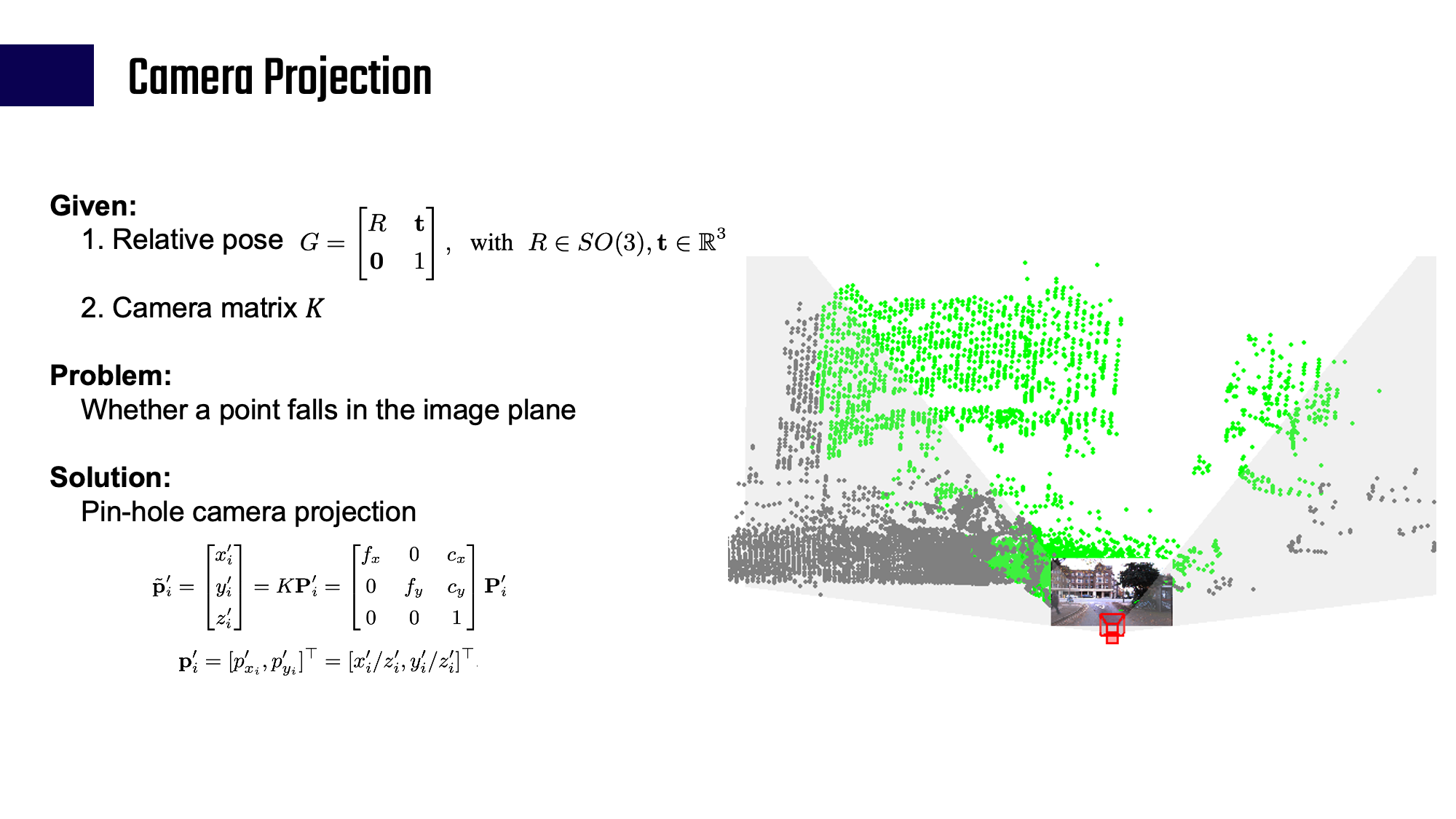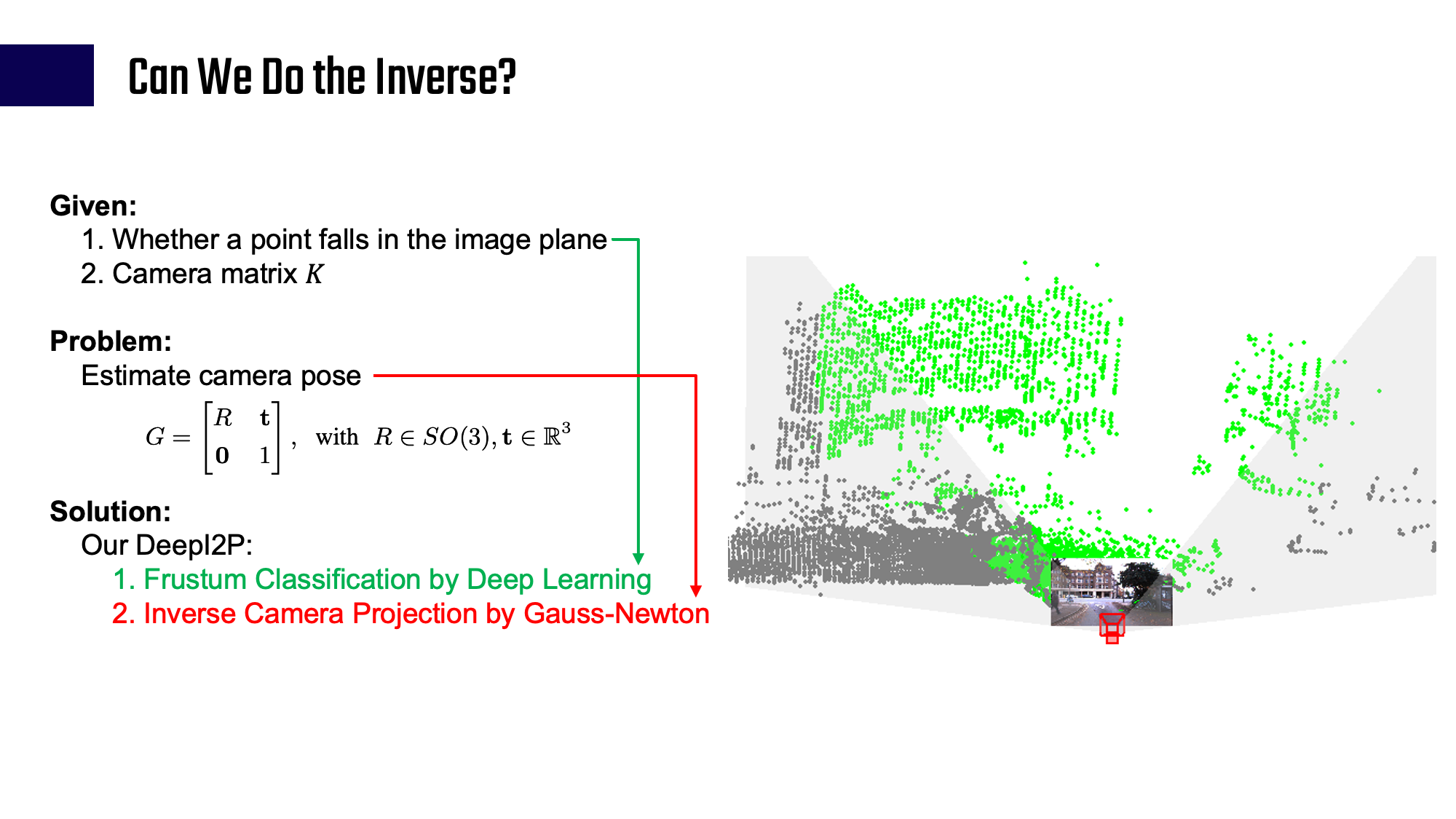#DeepI2P: Image-to-Point Cloud Registration via Deep Classification
PyTorch implementation for our CVPR 2021 paper DeepI2P. DeepI2P solves the problem of cross modality registration, i.e, solve the relative rotation R and translation t between the camera and the lidar.
DeepI2P: Image-to-Point Cloud Registration via Deep Classification
Jiaxin Li 1,
Gim Hee Lee 2
1ByteDance, 2National University of Singapore
The intuition is to perform the Inverse Camera Projection, as shown in the images below.


data: Generate and process datasetsevaluation: Registration codes, include Inverse Camera Projection, ICP, PnPfrustum_reg: C++ codes of the Inverse Camera Projection, using Gauss-Newton Optimization. Installation method is shown below. It requires the Ceres Solver.
python evaluation/frustum_reg/setup.py installicp: codes for ICP (Iterative Closest Point)registration_lsq.py: Python code for Inverse Camera Projection, which utilizes the per-point coarse classification prediction, and thefrustum_regsolver.registration_pnp.py: Python code for PnP solver utilizing the per-point fine classification prediction.
kitti: Training codes for KITTInuscenes: Training codes for nuscenesoxford: Training codes for Oxford Robotcar datasetmodels: Networks and layers- 'index_max_ext': This is a custom operation from SO-Net, which is the backbone of our network. Installation:
python models/index_max_ext/setup.py installnetworks_img.py: Network to process images. It is a resnet-like structure.networks_pc.py: Network to process point clouds, it is from SO-Netnetwork_united.py: Network to fuse information between point clouds and images.